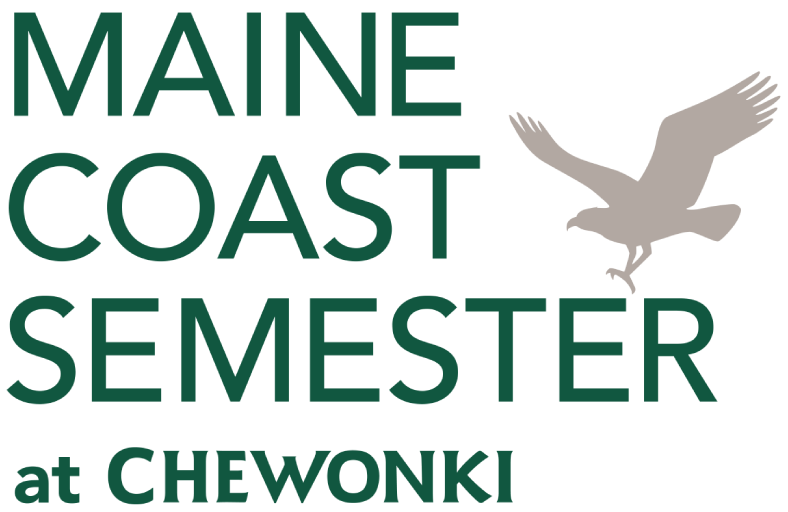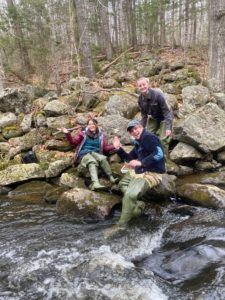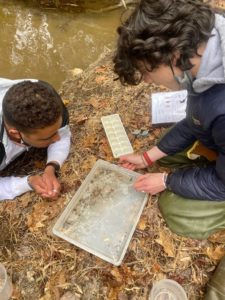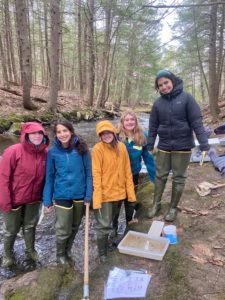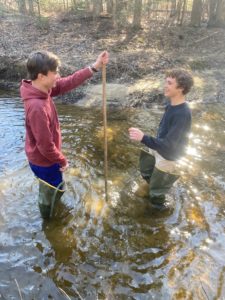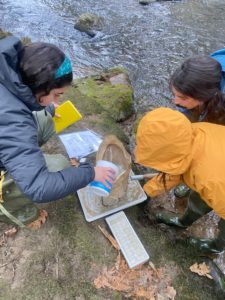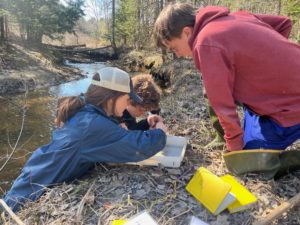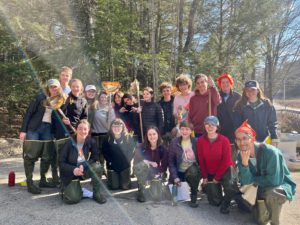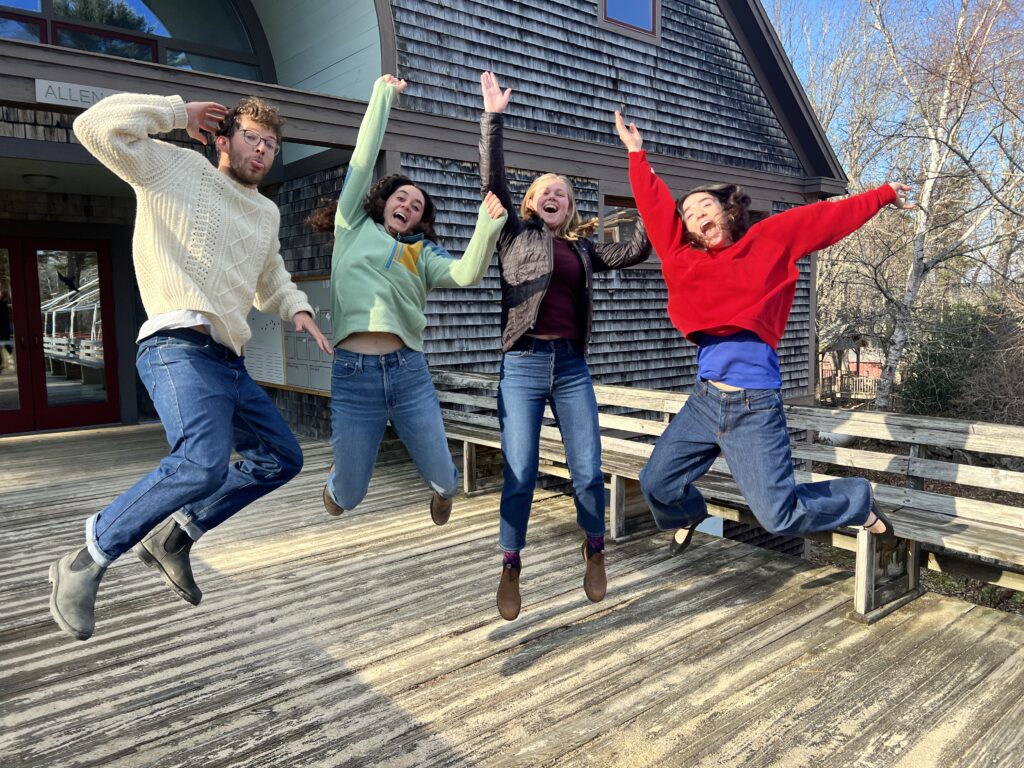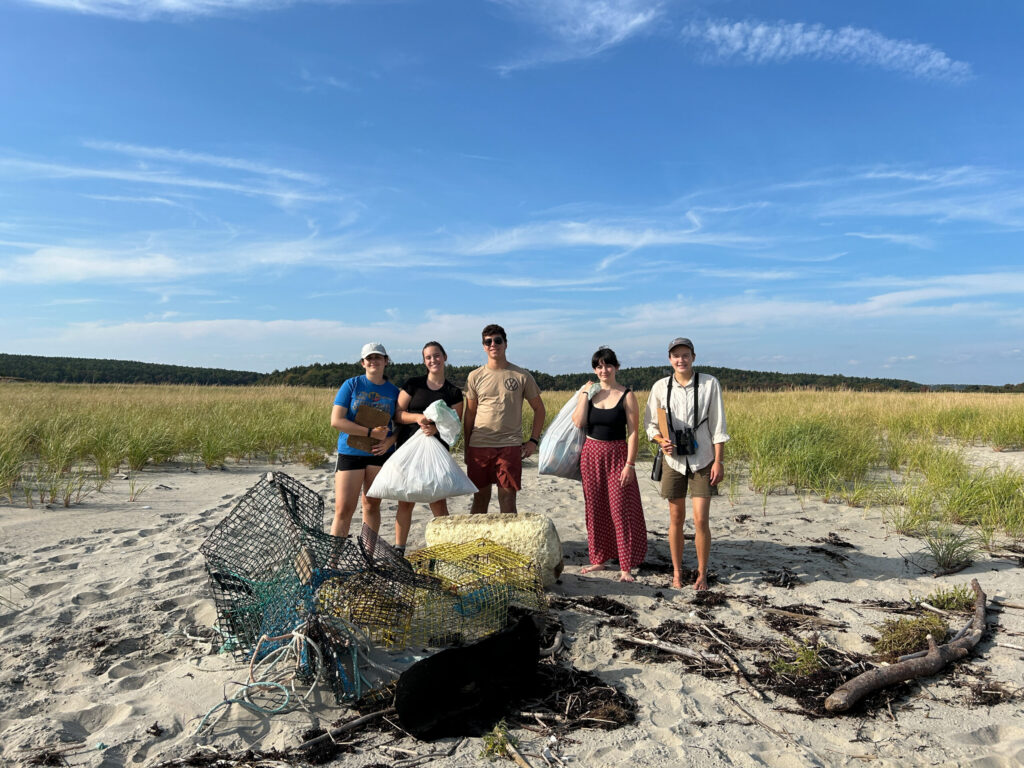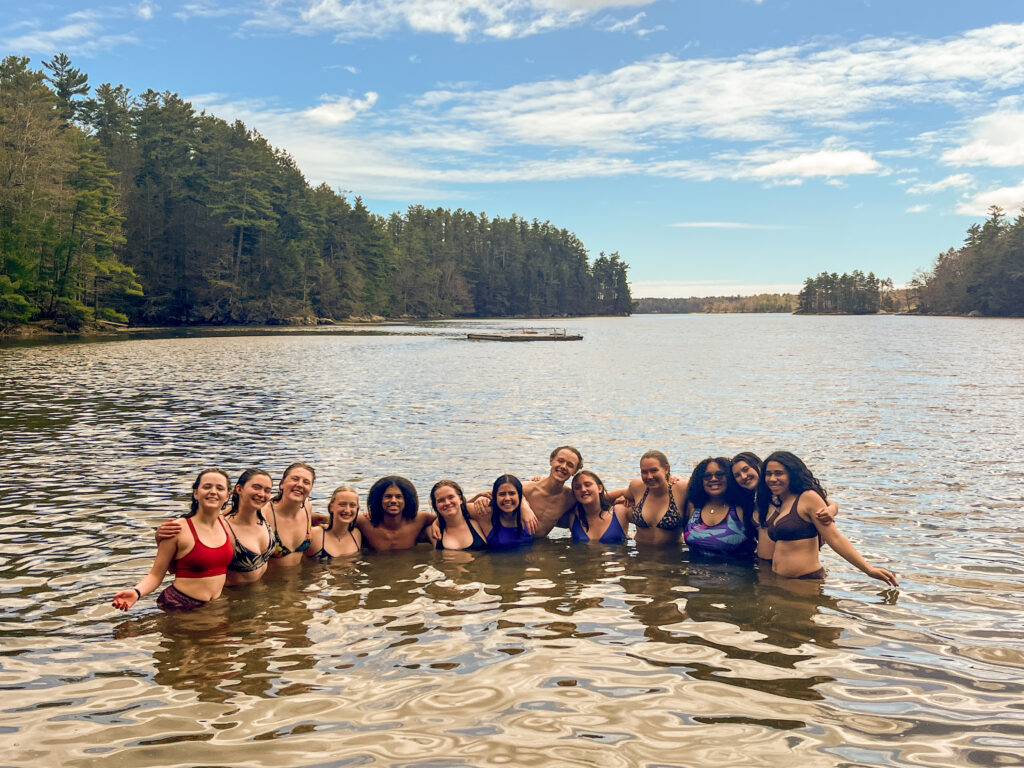Last Tuesday, my field lab group and I congregated outside the barn to try on our hip-length wader boots. We made sure our boots were securely fastened in anticipation of the treacherous adventure we were about to embark on, and laughter filled the air as we realized how ridiculous we looked in the clunky shoes. After several extended photoshoots, everyone piled into the vans, and we drove down Chewonki Neck Road with smiles on our faces and cheerful music blasting through the staticky car speakers.
Fifteen minutes later, we pulled to the side of the road and unloaded all of our gear. With bright yellow field journals in hand, we peered over the side of the bridge into the cold, swirling waters of Montsweag Brook. The brook extends from somewhere near the town of Wiscasset all the way down through Chewonki’s campus and out into the open ocean. We had arrived near the northernmost point of the stream, and I heard shouts of amusement mixed with dismay as my science teachers began to wade through the flowing water. Careful to keep my backpack and field journal from the water’s icy grasp, I immersed my feet in the water and made my way across the stream.
It was a balmy April afternoon, and sunlight warmed the tops of our heads as my friends and I (having successfully made it across the stream) sat on the opposite side of the bank while Lucy, our science teacher, taught us about the formation of rivers and brooks. I jotted down notes while the peaceful noise of the flowing water interrupted the mid-afternoon stillness, and I spotted several fish darting through the rocks near the opposite bank. A crisp breeze rang through the air, stirring the branches of the eastern hemlocks above our heads and rustling the pages of my yellow notebook, which I had been filling with questions and observations about my surroundings in the new environment.
After Lucy’s lesson about the history of the brook, we split into groups of four and journeyed upstream to gather samples of different insects that were living in the chilly water. Felix and Peyton took samples of water in the shallow tray we had been given while Carly and I found the temperature of the water and recorded data. As a group, we carefully examined our trays for insects and began identifying them with our field guides. The biodiversity that we saw in a single liter of water was astonishing, and learning about all the different organisms that make up an ecosystem provided me with a much stronger appreciation for the natural world – an appreciation which I feel has been growing with each moment I spend at Maine Coast Semester.
As our stomachs began to rumble and the sun dipped lower in the sky, my classmates and I climbed back into the vans and collected our snacks of chips and apples before heading back to campus. I strode across the quad and over to the barn as bright pinks and oranges began to streak overhead, and I felt thankful that my waders had kept me warm and dry, even after I walked through the unyielding waters of Montsweag Brook. Still filled with adrenaline after an amazing field lab, I returned to my cozy cabin and relaxed with my friends before heading to dinner later that night. Field labs are always one of my favorite parts of each week, and I can’t wait to see what adventures are in store for next Tuesday.
Ella Walsmith, Milton Academy, Hingham, MA
